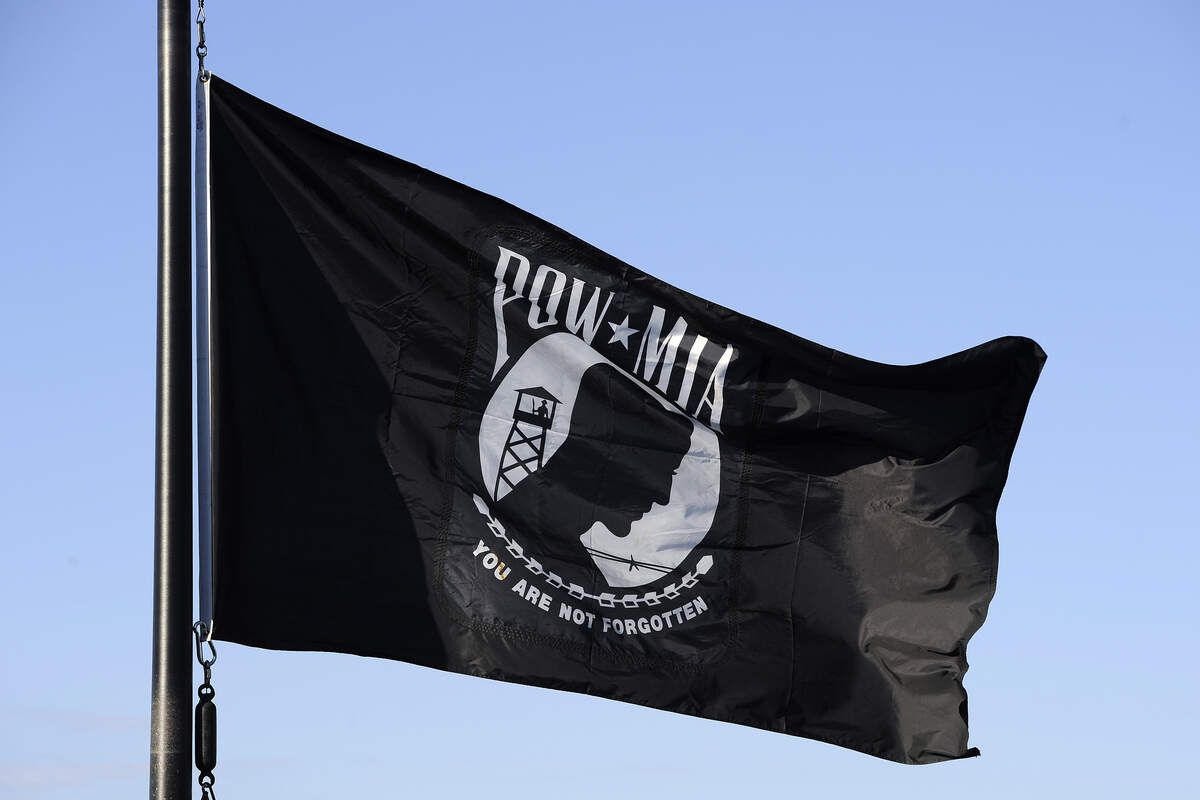

National POW/MIA Recognition Day
Observed
annually on July 18th (1979 and 1980)
on July 17th (1981)
on July 9th (1982)
on April 9th (1983)
the third Friday in July (1984 and 1985)
the third Friday in September (since 1986)
Dates
September 15th, 2023
September 20th, 2024
September 19th, 2025
September 18th, 2026
September 17th, 2027
Founded by
United States Congress on August 18th, 1978
President Jimmy Carter on June 4th, 1979
Hashtags
Sources
https://dpaa-mil.sites.crmforce.mil/dpaaFamWebPosters
https://en.wikipedia.org/wiki/National_POW/MIA_Recognition_Day
https://www.congress.gov/bill/95th-congress/house-joint-resolution/963/text
https://www.defense.gov/News/News-Stories/Article/Article/2772567/defense-department-observes-national-powmia-recognition-day/
https://www.presidency.ucsb.edu/documents/acts-approved-the-president-317
https://www.presidency.ucsb.edu/documents/proclamation-4664-national-pow-mia-recognition-day-1979
https://www.presidency.ucsb.edu/documents/proclamation-5520-national-powmia-recognition-day-1986
In the era following the Vietnam War, the families of over 2,500 prisoners of war (POWs) and servicepersons who went missing in action (MIAs) pushed for accountability for their loved ones. In response, the House and Senate passed a joint Congressional resolution in 1978 that designated July 18, 1979, as National POW/MIA Recognition Day. The following year, President Jimmy Carter issued Proclamation 4664. In it, he said in part:
As we now enjoy the blessings of peace, it is appropriate that all Americans recognize the special debt owed those Americans held prisoner during wartime. It also is appropriate that we remember the unresolved casualties of war, our soldiers who are missing. The pain and bitterness of war endures for the families, relatives and friends of those whose fate is unknown. Our Nation will continue to seek answers to the questions that remain about their fate.
He went on to say that National POW/MIA Recognition Day was "a day dedicated both to all former American prisoners of war as well as those still missing and to their families," and he called "on all Americans to join on this occasion in honoring those who made the special sacrifice of being captive in war, and their loved ones." Essentially, National POW/MIA Recognition Day honors those who were prisoners of war, and those who are still missing in action. It aims to ensure that America stands behind those who serve, and does everything it can to account for those who haven't returned.
For the first observance, a ceremony was held at the National Cathedral in Washington, D.C., and Langley Air Force Base's 1st Tactical Squadron flew the missing man formation. Since then, most national-level ceremonies have been held at the Pentagon. They are attended by each branch of the military, and other high-ranking officials also take part. Smaller observances are held across the United States and at military installations and other locations around the world, such as at ships at sea, state capitals, veterans facilities, and schools.
National POW/MIA Recognition Day was held on a number of dates in July until 1986 when it began being observed on the third Friday in September. Since Carter's first proclamation, presidents have continued to issue proclamations for the day each year. The day should not be confused with National Former Prisoner of War Recognition Day, which is held on April 9.
According to 2005 data from the Congressional Research Service, there were 130,201 POWs during World War II, and 14,072 of them died. Of the 7,140 Korean War POWs, 2,701 died. There were 725 Vietnam War POWs, and 64 of them perished. All of the 37 servicepersons who were imprisoned during the Gulf Wars and other conflicts from 1991 to 2005 survived. According to 2023 data from the Defense POW/MIA Accounting Agency, there were 72,193 MIAs from World War II, 7,492 from the Korean War, 1,578 from Vietnam, 126 from Cold War conflicts, 5 from the Gulf Wars, and 1 from the El Dorado Canyon operation in Libya. Seventy-five percent of missing persons are thought to be lost in the Asia-Pacific, and over 41,000 missing persons are presumed to be lost at sea. Work is ongoing to identify and bring them home. National POW/MIA Recognition Day helps raise awareness and support these efforts.
In 1971, Mary Hoff, whose husband, Navy Lt. Cmdr. Michael Hoff, had been shot down over Laos, contacted a flag company asking if a flag to remember prisoners of war and the missing could be made. It was designed by World War II pilot Newt Heisley the following year. The silhouette of the man with his head bowed on the flag is actually of Heisley's son, 24-year-old Jeffrey, a Marine. Officially the National League of Families POW/MIA flag is commonly known as the POW/MIA flag. It is meant to be flown below the American flag and is not to be larger than it. If there are two poles, it flies to the left of the American flag. The flag has been flown below the American flag at the White House on each National POW/MIA Recognition Day since 1982.
Bracelets began being worn for POWs and MIAs in the late 1960s, became commonplace in the 1970s, and are still worn today in honor of those from more recent wars. They are a half-inch wide and made of stainless steel or copper or are nickel-plated. They are engraved with the name, rank, service, and date of loss of the serviceperson. The wearing of bracelets and the flying of the POW/MIA flag are just two obvious ways that prisoners of war and those who are missing in action are honored and shown support on National POW/MIA Recognition Day.
How to Observe National POW/MIA Recognition Day
- Attend an official National POW/MIA Recognition Day event.
- Learn more about this year's National POW/MIA Recognition Day event at the Pentagon on the U.S. Department of Defense's webpage for the day.
- Order an official National POW/MIA Recognition Day poster and view posters from previous years.
- Read a book that focuses on POWs and MIAs.
- Watch a film about POWs.
- Explore the most up-to-date numbers on US servicepersons who are missing in action from the Defense POW/MIA Accounting Agency.
- Purchase and fly a POW/MIA flag.
- Read more about the history of POW/MIA bracelets. Then, get a bracelet and wear it. They can still be purchased from the Ohio Chapter POW/MIA, which donates all of the proceeds to help sustain the efforts of the National League of Families of American Prisoners & Missing in Southeast Asia.





















